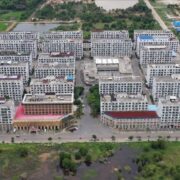When skills don’t match jobs

Before the pandemic, the biggest portion of our jobless were those who got up to junior high school; now, it’s those who have gone to college. In January 2020, the Philippine Statistics Authority reported that workers who reached or completed junior high school made up 39.5 percent of the unemployed (28.7 percent of whom finished Grade 10). College-educated workers made up 36.9 percent (26.9 percent of whom graduated). June 2025 data show that more than half of our unemployed went to college (50.4 percent, 38.2 percent having graduated). While the total unemployed workers went down by nearly half a million from 2.39 million in January 2020 to 1.95 million in June 2025 (good news), our college-educated jobless actually swelled by 100,000 (bad news). It’s enough to make a senior high school graduate think twice about pursuing college. Technical-vocational graduates, who only make up 3.8 percent of the unemployed, actually stand a better chance at gainful employment. For every tech-voc graduate who is jobless, there are four who are college-educated.
Social Weather Stations survey data on joblessness uphold the same observation. Their latest jobs survey showed college graduates and those with post-graduate education making up the single largest portion (22 percent) of those who reported having no job. Junior high school graduates accounted for 21 percent, elementary school graduates 20 percent, and those who didn’t complete elementary grades comprised only 9 percent—suggesting that the easiest jobs to come by are low-level ones requiring little education.
There’s more. In the job fairs conducted by the Department of Labor and Employment, only a tiny fraction of the available jobs gets filled, and only one in six job applicants gets hired. DOLE’s last Labor Day job fairs nationwide saw a total of 261,581 local and overseas jobs being offered, exceeding the jobseekers (numbering 37,279) six-to-one. Top vacancies were in the manufacturing, retail, accommodation, business process outsourcing, and financial/insurance industries for production operators, salesclerks, call center representatives, service crew, and microfinance officers. But only 5,780 (15.5 percent, or fewer than one in six applicants) were readily hired, while only 2.2 percent were filled, or fewer than one for every 45 available jobs. These were mostly for low-level positions: cashier, service crew, bagger, sales associate, clerk, production crew, loan officer, store clerks, and teachers of English as a second language (ESL teacher). We clearly don’t lack jobs; we just don’t have the right people for them.
There’s more anecdotal evidence of our glaring jobs-skills mismatch. In a past study, my research team encountered a large industrial firm in Batangas that needed dozens of engineers for its expansion but couldn’t find suitable recruits. A government agency needed dozens of specialists in a particular field, but among numerous applicants, it found only two who were qualified. And we all recall the mad rush to nursing schools that happened in past years, and the equally mad rush of colleges and universities to offer nursing courses. Soon, there was a glut of nursing graduates, and they ended up being the ones actually paying hospitals to gain the needed work experience to bolster their credentials. Many ended up working in call centers or in totally unrelated jobs.
In the same study, we came across another mismatch that’s even harder to fix. Human resource officers indicated that they often sought in recruits qualities that were not so much technical skills learned from STEM courses (science, technology, engineering, and math), but more of “soft” skills. These include motivation, analytical ability, creativity, resourcefulness, honesty, the ability to work in teams, communication and presentation skills, and the like—things not normally taught in schools but gained from family and community experience and basic education. These are even harder to find.
As to hard skills, our neighbors are way ahead of us. Indonesia and Vietnam reportedly produce 140,000 and 100,000 engineers yearly, respectively. We graduate 50,000 engineers yearly, but only about half of them pass the licensure exam. We have a problem on the supply side, but there’s a lingering problem on the demand side as well, because we can’t attract enough investors in manufacturing industries that will employ more of those engineers. This is unfortunate because it’s in manufacturing where labor productivity is highest and job quality is superior.
What’s the implied homework? One, we need industry and academe to talk more and coordinate better. Two, we need to fix the long-standing issues that deter job-creating investments by both Filipinos and foreigners alike. Neither is easy, but the first is a bit easier. As for the second, I’m not holding my breath.





















PH nutrition programs: Too little, too late